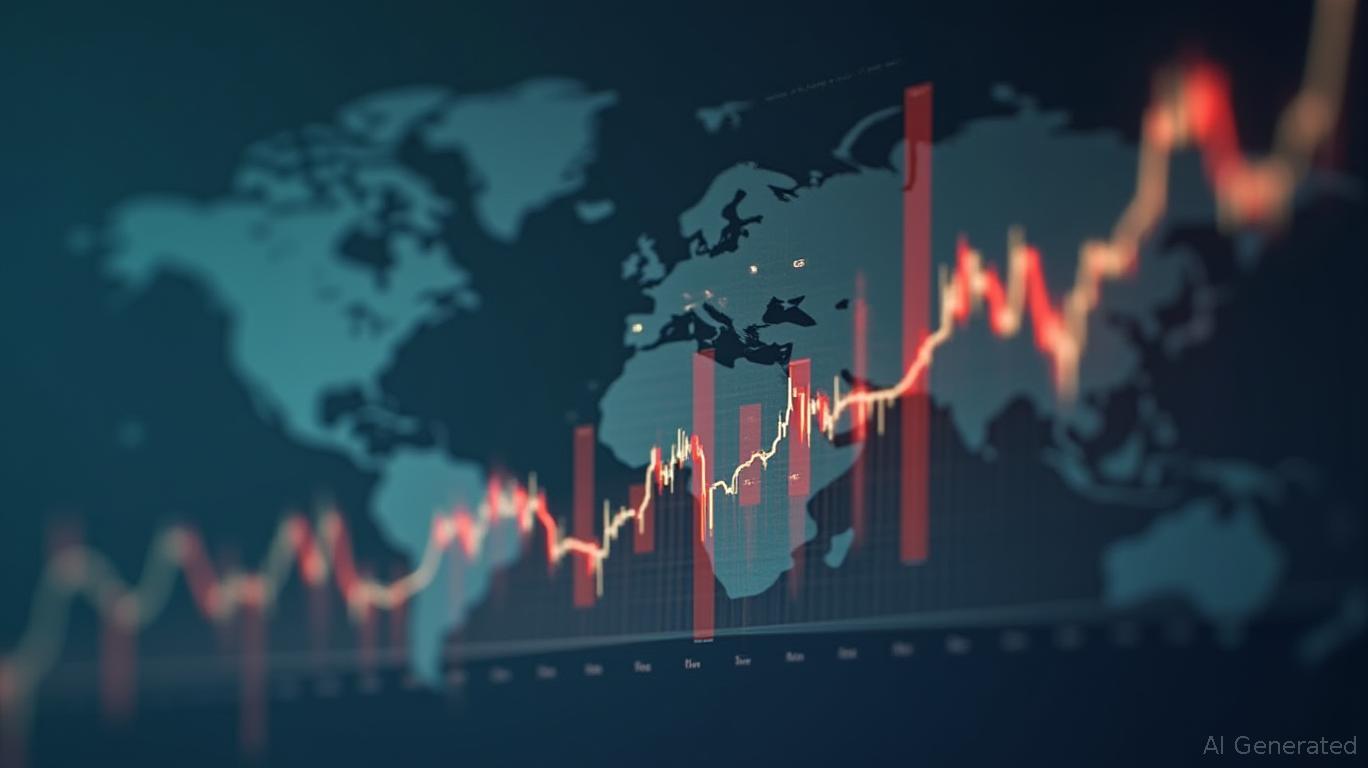WTI Crude Oil: Riding the Wave of Macro Optimism and Algorithmic Shifts
The price of West Texas Intermediate (WTI) crude oil has edged upward in recent weeks, fueled by a confluence of macroeconomic stabilization, geopolitical trade optimism, and algorithmic trading dynamics that are reshaping market sentiment. At $66 per barrel,
has reclaimed ground lost earlier this year, driven by a mix of fundamentals and technical shifts. For investors, the question is: Is this a sustainable trend, or just another blip in the volatile oil market?The U.S. Jobs Data: A Steady Foundation for Demand
The May U.S. jobs report, showing 139,000 nonfarm payrolls added and a stable 4.2% unemployment rate, has calmed fears of an imminent economic slowdown. While the labor market isn't booming, it's not collapsing either—a critical point for oil demand. Key sectors like healthcare (+62,000 jobs) and leisure (+48,000) are fueling hiring, even as federal government jobs shrink.
This stability matters because oil demand is inextricably tied to economic activity. The BLS report's confirmation that long-term unemployment has fallen (down 218,000 year-over-year) suggests households and businesses are still spending, even if cautiously.
U.S.-China Trade Talks: The Geopolitical Tailwind
The recent U.S.-China trade talks, while far from a grand bargain, have introduced enough optimism to lift crude prices. Both sides agreed to pause tariffs and establish a dialogue mechanism in May, and while implementation remains rocky (e.g., U.S. semiconductor export controls and China's delayed rare earth exports), the market is pricing in reduced trade war risks.
This matters because China and the U.S. collectively account for over 30% of global oil demand. Even incremental progress in resolving tariff disputes can boost sentiment for crude—a fact reflected in the 3% weekly rally in ICE Brent prices.
However, risks linger. U.S. courts have ruled some tariff methods unlawful, and China's frustration over visa restrictions and tech bans could derail talks. Still, the mere prospect of reduced friction has been enough to nudge demand expectations upward.

Algorithmic Traders: Short Positions Are Getting Shorter
Behind the scenes, algorithmic trading dynamics are playing a hidden role in WTI's rise. The CFTC's Commitments of Traders (COT) reports reveal a notable shift: non-commercial traders (speculators) have been reducing their net short positions in WTI futures. This aligns with upgrades to trading infrastructure like CME's migration to Google Cloud and the iLink 3 migration, which have streamlined order execution and reduced latency for high-frequency strategies.
Meanwhile, the technical picture is supportive. WTI has held above key support levels ($60–$62), and while overbought conditions exist at $66, the recent pullback from $67 could set the stage for a retest of those highs.
Strategic Opportunity: Buy the Dip, But Beware the Risks
The combination of macro stability, trade optimism, and algorithmic shifts creates a compelling case for WTI exposure. For investors, here's how to play it:
- Buy the Dips: Use pullbacks below $64 to enter long positions in WTI futures or ETFs like the United States Oil Fund (USO).
- Time the OPEC+ Meeting: OPEC+'s July output decision—expected to keep cuts in place—could add another leg upward.
- Hedge with Options: Consider buying call options to limit downside risk while capturing upside.
Cautions:
- Tariff Risks: If U.S.-China talks sour, crude could drop back below $60.
- Fed Rate Policy: A rate hike in July would weigh on demand and the dollar, indirectly pressuring oil.
- Supply Shocks: Canada's wildfire-driven production cuts (340,000 bpd) are easing, but heatwaves could reignite supply fears.
Conclusion: A Fragile Rally, but Rally Nonetheless
WTI's upward trajectory isn't a sure thing, but the confluence of macro stability, geopolitical optimism, and algorithmic shifts has created a bullish backdrop. Investors who can stomach volatility—and have hedged their bets—should find opportunities in this market. As always, keep one eye on OPEC+ and the other on Washington.

Comments
No comments yet